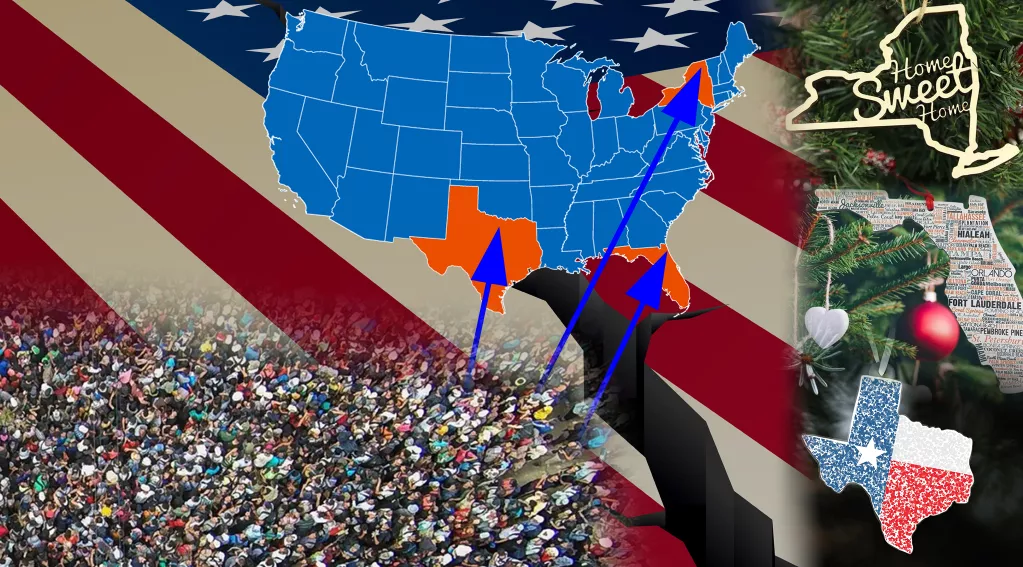New Homes For the Holidays: Migrant Families Scatter Across the Several States

If lifting Title 42 triggers a widely anticipated run on the southern border, the question becomes: Where will most of these new migrants end up?
A 2022 government report that tracked the intended destinations of released family units found the largest numbers settled in three states: Florida, New York and Texas. But aside from these three states, surprisingly large contingents scattered into many other locations deep into the U.S. interior.
From March 2021 to February 2022, the Government Accountability Office (GAO) tallied more than 10,000 migrant family units settling in Florida, New York and Texas. In fourth place, California received between 6,000 and 10,000.
But, notably, 2,000-10,000 families also headed to 12 other states: Connecticut, Georgia, Illinois, Indiana, Louisiana, Maryland, Massachusetts, New Jersey, North Carolina, Pennsylvania, Tennessee and Virginia.
Colorado and South Carolina received between 1,400 and 5,000 family units during the year, and 800-2,000 families landed in Alabama, Kentucky, Minnesota, Ohio, Utah, Washington and Wisconsin.
The GAO report counted 185,002 family units during the period, but acknowledged it was only a fraction of the actual total since many migrants did not apprise officials of their itineraries. Whatever the numbers were earlier this year, lifting Title 42 protocols at the border will substantially expand alien entries. An eleventh hour stay issued by Supreme Court Chief Justice John Roberts has delayed the Dec. 21 end-date for Title 42, but the program still hangs by a thread.
Parsing the data, Jessica Vaughan of the Center for Immigration Studies, states: “While the feds currently see no reason to coordinate with local authorities, it is typically the state and local governments (and taxpayers) that bear most of the fiscal burden.”
In March, the Department of Homeland Security enlisted Federal Emergency Management Administration (FEMA) to help prepare for as many as 18,000 migrants per day. That volume would be nearly three times the current pace of arrivals.
At a monthly rate of 540,000, transplanted migrants across the U.S. would make up the 35th largest city in the country. That effectively builds a new population bloc bigger than New Orleans, Orlando, Minneapolis or Kansas City – every month.
To say this has serious socio-economic implications is an understatement. New York City Mayor Eric Adams recently warned that his city may have to cut public services for residents to prioritize and accommodate the expected arrival of 1,000 migrants there every week.
In so many words, Americans are told to pay up and shut up.

